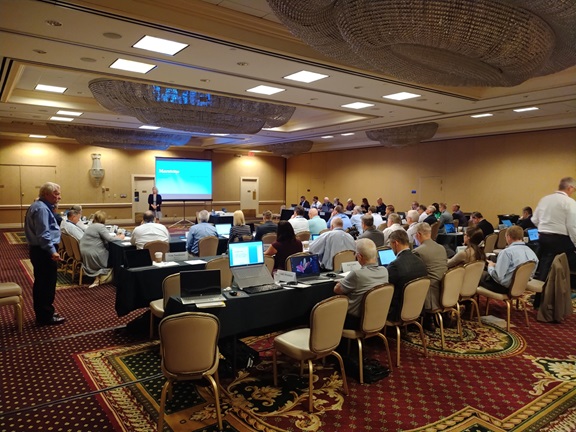Recruiting and retaining financial advisors is one of the biggest challenges facing Registered Investment Advisory (RIA) firms looking to grow. Whether the firm is scaling geographically, acquiring new clients, or looking to streamline operations, building a talented group of advisors is crucial.
With the right hiring practices, compensation structures, and retention strategies for advisors, scalable growth is possible. Without a clear talent-strategy, firms will struggle with high turnover, recruiting/hiring challenges, and scalability. In this blog, we will examine the challenges RIAs face recruiting and retaining advisors, best practices for hiring them, and strategies for structuring a scalable advisor team.
Identifying the Right Advisors
Finding, hiring, and retaining financial advisors is not easy. It requires a solid understanding of compensation structures, what advisors want in terms of career growth, and cultural fit. RIAs looking to grow must be able to acquire and retain qualified financial advisors that are aligned with and fit the firm’s business model and culture.
Unlike traditional brokerage firms, RIAs have more flexibility in how they structure their workforce. They can hire full-time employees (W2), independent contractors (1099), or use a combination of both.
Many RIAs prefer using 1099 advisors because they work on a commission-only basis, and therefore do not incur a fixed payroll expense. However, attracting these advisors can be difficult if they believe full-time employees will receive preferential treatment when firm-generated leads are assigned. Additionally, many independent advisors are bound by restrictive non-solicitation agreements that make it difficult to bring over their existing book of business.
While W2 employees allow greater control and consistency, hiring full-time advisors requires a much larger monetary commitment (salaries and benefits) from the firm. The advisor firm must have enough business volume to support the cost of adding salaried advisors.
Attracting the Right Advisors
To attract the right talent, RIAs need to create a value proposition that is attractive enough to generate interest in their firm. Some ideas for recruiting the right kind of advisors include:
- Clearly Defined Career Paths. Advisors are looking for growth opportunities. RIAs can differentiate themselves by offering a standard career path, such as partnership or some level of equity ownership.
- Clear Compensation Models. Clarifying expectations of how leads will be assigned will limit friction between 1099 and W2 advisors.
- Negotiating Non-solicitation Agreements. RIAs should work with advisors to negotiate buyouts of contracts or develop a structured transition to avoid any breech of legal agreements.
- Leveraging Connections. RIAs can utilize current relationships with Centers of Influence (COI) in the industry, like CPAs and attorneys, that can assist in identifying advisors who are looking for new or different opportunities.
Retaining Top Talent
The financial advisory industry is competitive and many firms experience turnover when financial advisors leave the firm to work for a competitor or start their own practice. By focusing on recruiting and retaining financial advisors, firms can reduce turnover and build a high-performing team.
Instead of relying on punitive non-compete contracts that ban advisors from choosing to switch companies, firms should provide incentives for future advisors to join and ways to make staying more attractive than leaving. Firms could offer equity positions, profit-sharing or deferred compensation to encourage long-term commitment.
Top advisors want to continually grow their expertise as well as their client base, so offering sales training, mentorship outcomes, and business development assistance can promote advisor loyalty and reduce turnover. Additionally, encouraging advisors to strengthen their relationships with COI networks and teaching them how to generate consistent referrals from CPAs and estate attorneys enable advisors’ growth.
High-performance advisors often face burnout from managing too many clients. Establishing and implementing a structured client segmentation model where clients are segmented based on revenue contribution and lower-priority clients are transferred to junior advisors when they reach a specific threshold can help alleviate advisor burnout.
When and Where to Add Advisors
RIAs often ask, “When do I add advisors?” and “Where do I add those advisors?” When firms add advisors too quickly, resources are strained. However, hiring too slowly can limit growth opportunities.
- W2 advisors typically work at established office locations with repeatable lead generation. Firms should add W2 advisors only when there is sufficient business volume to warrant the need for a full salary and there is a consistent flow of new clients entering the system.
- When firms are exploring entering new geographic markets or growing in a new area, 1099 advisors can be an effective way to test market demand before opening a physical office. 1099 advisors are also commonly used for servicing remote clients without requiring additional overhead.
- Utilizing junior advisors or advisors in a “farm system” capacity is a sensible way for a firm to judiciously manage capacity. When senior advisors reach full capacity, they can transition lower-revenue clients to junior advisors to allow senior advisors to refocus their efforts on retaining their high-value clients without hiring additional headcount.
If an RIA is protectively targeting entering a new market, they should consider hiring and deploying a COI specialist (a full-time business developer focused on CTO and attorney referrals) as a short- to mid-term means to enter the market and create a name for the firm. The COI expert can test demand and assess whether that market is viable.
Building the Foundation for Sustainable Growth
RIAs can create a path to sustainable growth through a deliberate process of proactive recruiting, retention incentives, and structured hiring processes. In addition, proper use of COI relationships and focusing on client segmentation strategies can help ensure that advisors are productive, engaged, and connected to the initiatives of the firm.
As a consulting firm specializing in RIA practice improvement, business development, and organizational growth, Pohl Consulting helps RIAs optimize their hiring strategies, enhance advisor retention, and implement scalable growth plans aligned with the firm’s vision.
Contact us today to learn how we can help your firm build a strong advisor team for long-term growth.



